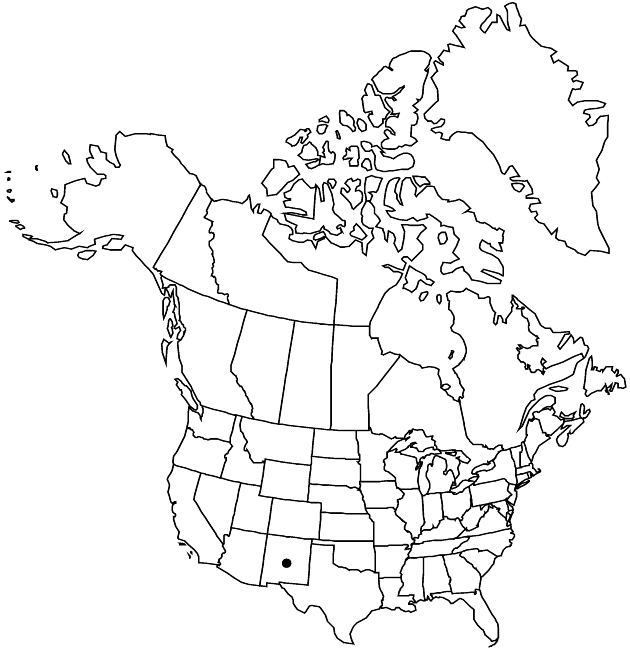Difference between revisions of "Stevia salicifolia var. salicifolia"
FNA>Volume Importer |
FNA>Volume Importer |
||
| Line 1: | Line 1: | ||
{{Treatment/ID | {{Treatment/ID | ||
|accepted_name=Stevia salicifolia var. salicifolia | |accepted_name=Stevia salicifolia var. salicifolia | ||
| − | |accepted_authority= | + | |accepted_authority= |
|publications= | |publications= | ||
|basionyms= | |basionyms= | ||
| Line 19: | Line 19: | ||
|elevation=1500–2700 m | |elevation=1500–2700 m | ||
|distribution=N.Mex.;Mexico. | |distribution=N.Mex.;Mexico. | ||
| − | |discussion=<p><i>Stevia salicifolia</i> is variable. Some 14 specific and infraspecific names were regarded as synonyms of < | + | |discussion=<p><i>Stevia salicifolia</i> is variable. Some 14 specific and infraspecific names were regarded as synonyms of <i></i>var.<i> salicifolia</i> by J. L. Grashoff (1972). The variety differs from other members of <i>Stevia</i> in the flora area by its stem and leaf surfaces (glabrous-shiny from viscid exudate of sunken glands); other taxa in the flora area usually have sparsely hairy, not shiny, stems and leaves. The variety is known in the United States from a single locality (Hidalgo County); from Mexico, it closely approaches Texas and Arizona (B. L. Turner 1996+, vol. 2) and it seems likely that it may eventually be discovered in those states.</p> |
|tables= | |tables= | ||
|references= | |references= | ||
| Line 28: | Line 28: | ||
-->{{#Taxon: | -->{{#Taxon: | ||
name=Stevia salicifolia var. salicifolia | name=Stevia salicifolia var. salicifolia | ||
| − | + | |authority= | |
| − | |authority= | ||
|rank=variety | |rank=variety | ||
|parent rank=species | |parent rank=species | ||
| Line 43: | Line 42: | ||
|publication year= | |publication year= | ||
|special status= | |special status= | ||
| − | |source xml=https://jpend@bitbucket.org/aafc-mbb/fna-data-curation.git/src/ | + | |source xml=https://jpend@bitbucket.org/aafc-mbb/fna-data-curation.git/src/eaa6e58056e40c9ef614d8f47aea294977a1a5e9/coarse_grained_fna_xml/V19-20-21/V21_1218.xml |
|tribe=Asteraceae tribe Eupatorieae | |tribe=Asteraceae tribe Eupatorieae | ||
|genus=Stevia | |genus=Stevia | ||
Revision as of 19:33, 16 December 2019
Shrubs, 10–50(–80) cm (glabrous). Leaves opposite; petioles 0 or 2–10 mm; blades lance-linear to lanceolate or narrowly elliptic, 3–9 cm, (bases gradually narrowed) margins entire or serrate to serrulate. Heads borne in tightly clustered arrays, usually in discrete groups of 10–25. Peduncles 0–4 mm, glabrous or sparsely puberulent. Phyllaries 5.5–6.5(–7) mm, glabrous (usually viscid-shiny from resinous exudate of ± evident sunken glands), apices acute to obtuse. Corollas white, lobes glabrous. Pappi usually coroniform and shorter than corollas, sometimes equaling corollas. 2n = 24.
Phenology: Flowering (Jul–)Aug–Oct (n Mexico).
Habitat: Oak and oak-pine woodlands, rocky sites, crevices, boulder pockets
Elevation: 1500–2700 m
Distribution

N.Mex., Mexico.
Discussion
Stevia salicifolia is variable. Some 14 specific and infraspecific names were regarded as synonyms of var. salicifolia by J. L. Grashoff (1972). The variety differs from other members of Stevia in the flora area by its stem and leaf surfaces (glabrous-shiny from viscid exudate of sunken glands); other taxa in the flora area usually have sparsely hairy, not shiny, stems and leaves. The variety is known in the United States from a single locality (Hidalgo County); from Mexico, it closely approaches Texas and Arizona (B. L. Turner 1996+, vol. 2) and it seems likely that it may eventually be discovered in those states.
Selected References
None.